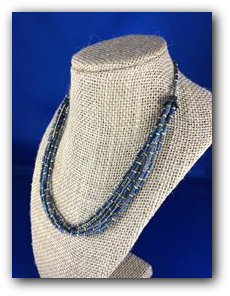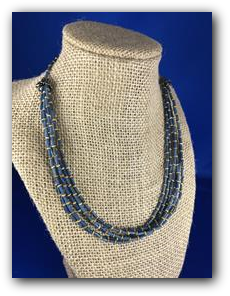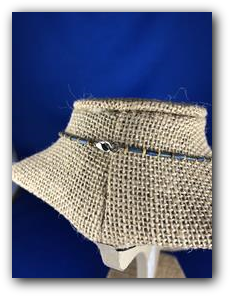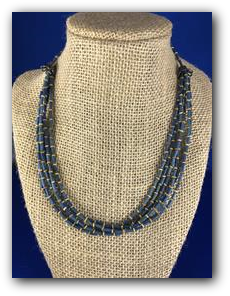
EGYPTIAN JEWELRY
ITEM#AB1057
Egyptian Faience Necklace, Amarna Period , CA 1353-1332 BCE
Egyptian Faience Necklace, Amarna Period , CA 1353-1332 BCE
AB1057 New Kingdom, Amarna Period, CA 1353-1332 BCE $550
A beautiful necklace composed of choice, delicate cobalt blue colored faience tube beads and bright yellow faience disc beads dating from the time of Tutankhamun's father, Akhenaten. These beads are a rare find, as this was a short period in Egyptian history. They are strung in a single strand that branches out into 6 strands for a sophisticated and striking look. The necklace is strung to a length 18" using modern materials, with a total bead length of almost 77 inches of superb quality rare beads.
A beautiful necklace composed of choice, delicate cobalt blue colored faience tube beads and bright yellow faience disc beads dating from the time of Tutankhamun's father, Akhenaten. These beads are a rare find, as this was a short period in Egyptian history. They are strung in a single strand that branches out into 6 strands for a sophisticated and striking look. The necklace is strung to a length 18" using modern materials, with a total bead length of almost 77 inches of superb quality rare beads.
Faience, a ceramic formed from a mixture of sand and quartz with additives for color, is considered to be the forerunner of true glass. It was used to produce beads for jewelry, as well as votive and utilitarian items. During firing, the added impurities migrated to the surface, creating the durable glaze and producing the beautiful colors it is so prized for. Large amounts of faience items were produced for funerary use as well, to accompany the departed into the afterlife. The greatest number of Egyptian beads were made of Faience, an inexpensive alternative to the precious stones they emulated, such as turquoise and lapis. Possibly invented in either Mesopotamia or Egypt, by 4000 BCE, Faience was the first mass produced synthetic material to simulate precious stones. The development of Faience, and eventually glass, satisfied the desire of the general populace to wear beads that emulated the precious stones of the wealthy.
Click any picture to enlarge













